Commencing today, paid-up MB subscribers will receive a monthly report summarising the month’s major statistical releases pertaining to the Australian economy.
These are broken-down by topic below.
Housing
Yesterday, Core Logic-RP Data released its home values results for February, which registered 0.45% growth at the 5-city level – the second consecutive monthly increase in values. Quarterly price growth also rebounded to 1.4%, and was the first quarterly rise recorded since October 2015 (see next chart).
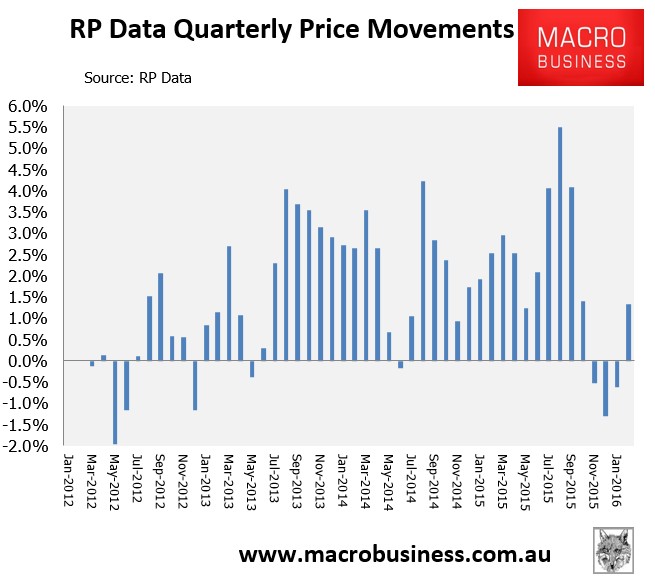
The next chart, which tracks trend annual price growth, shows that price momentum at the 5-city level rebounded slightly in February, although Sydney is slowing fast:
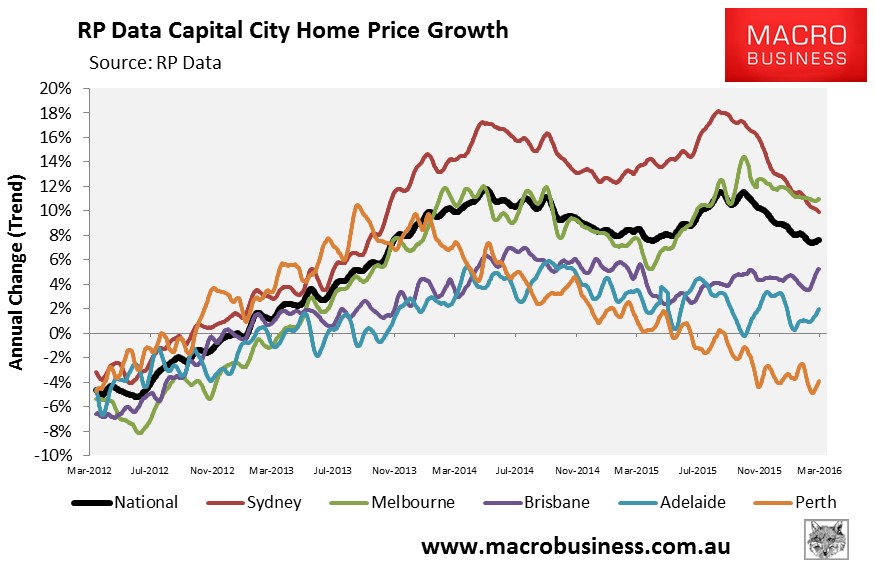
Earlier in the month, Core Logic-RP Data also revealed that the value of Australia’s housing stock had hit a record $6.4 trillion, and now accounts for more than half (52%) of Australia’s household wealth.
With Australian GDP running at $1.62 trillion in the year to September 2015, this infers a dwelling price-to-GDP ratio of just under 4 times – an unprecedented level – both domestically and globally.
However, while home values continued to inflate in February, rental growth remains in the gutter, with RP Data’s latest rental report revealing that rents registered zero growth in the year to January 2016 – the slowest growth on record:
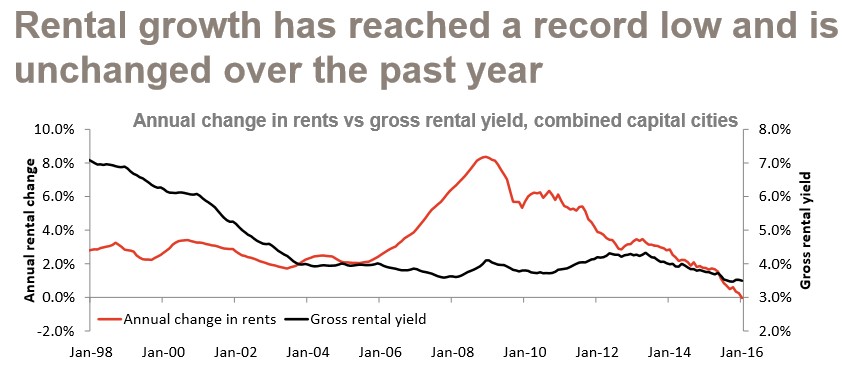
RP Data has previously stated that it expects more of the same in 2016, “due to increases in the supply of new housing, rental stock and a further slowdown in migration rates”. We at MB agree.
Support for this view came from the rental vacancy data released by SQM Research, which revealed that the national vacancy rate climbed to the GFC peak of 2.5% in trend terms in January:
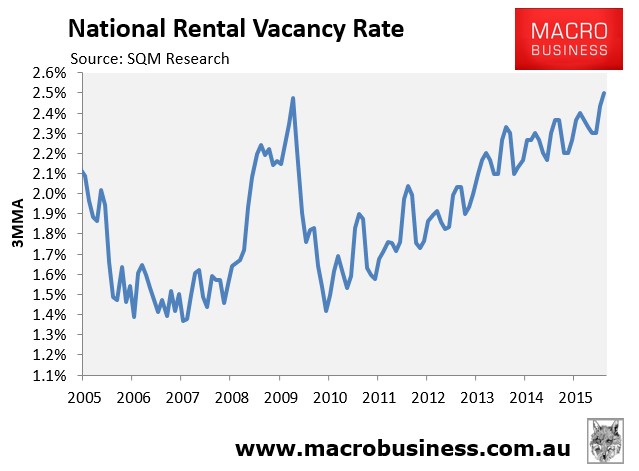
Speaking of increasing supply, the ABS also released its dwelling approval data for the month of December, which showed approvals continuing to decline from April’s peak, down 7.7% since then in trend terms:
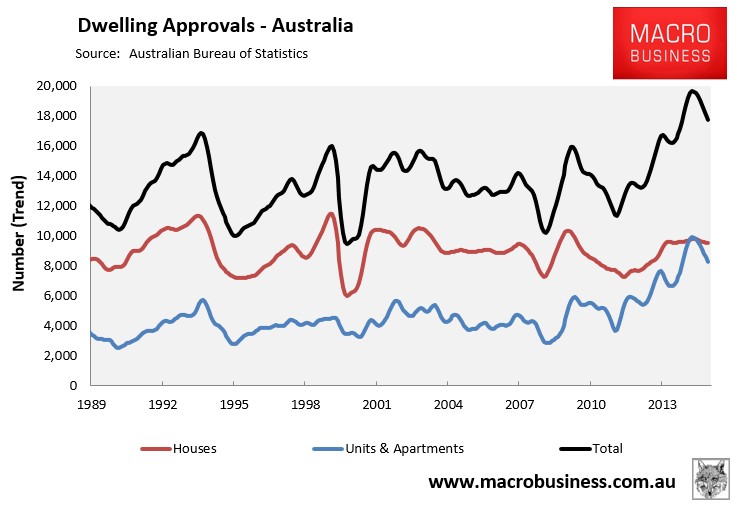
Dwelling approvals have also begun to decline in rolling annual terms:
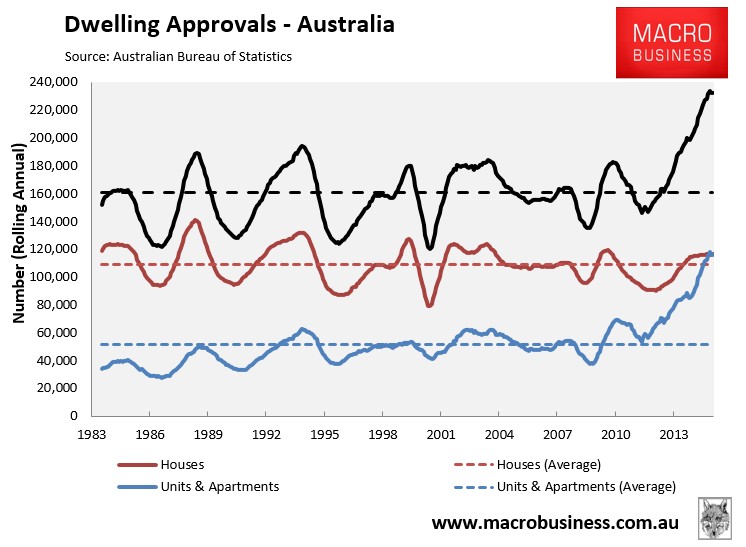
As shown in the next chart, trend approvals have fallen recently in Victoria, New South Wales and Western Australia, but have rebounded in Queensland:
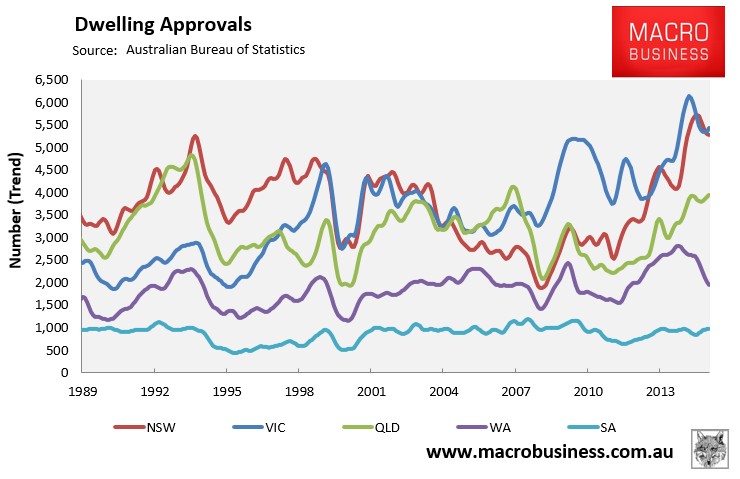
The national picture shows that dwelling approvals, commencements and completions are at record levels in annual terms, with population growth holding just above the GFC low:
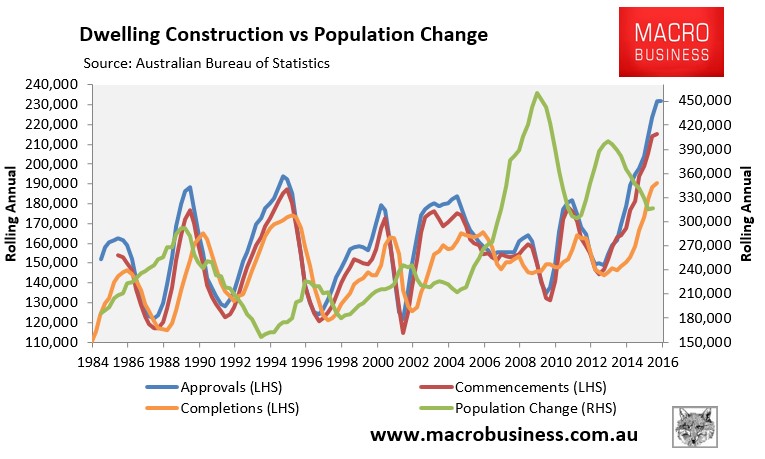
However, both approvals and commencements look to be topping-out.
It has been our long held view that dwelling construction would begin to fall in the second half of this year – a view supported by the Housing Industry Association, which has forecast that dwelling starts would peak this financial year (at 213,000), before construction falls by 24.8% to 160,100 in 2017/18:
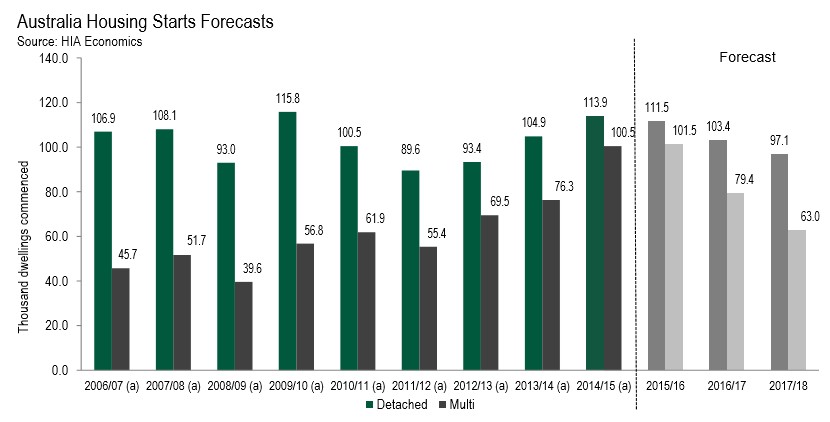
Turning to mortgage demand, housing finance came in stronger than expected in December, with the value of owner-occupied finance commitments rising by a seasonally adjusted 0.9% in December and investor commitments also rising by 0.6%.
The trend remains weak, however, with the annual growth rate of total finance commitments (ex-refinancings) continuing to fall, albeit with some offset between sharply falling investor demand and rising owner-occupied demand:
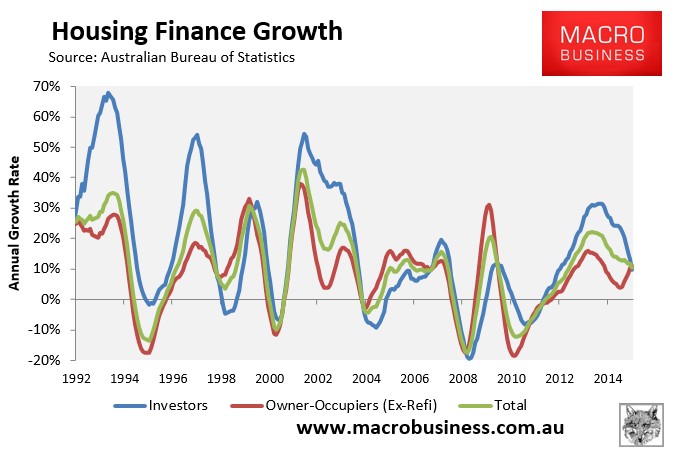
The RBA’s housing credit growth data for January, released yesterday, also revealed weakness, with quarterly growth continuing to fall:
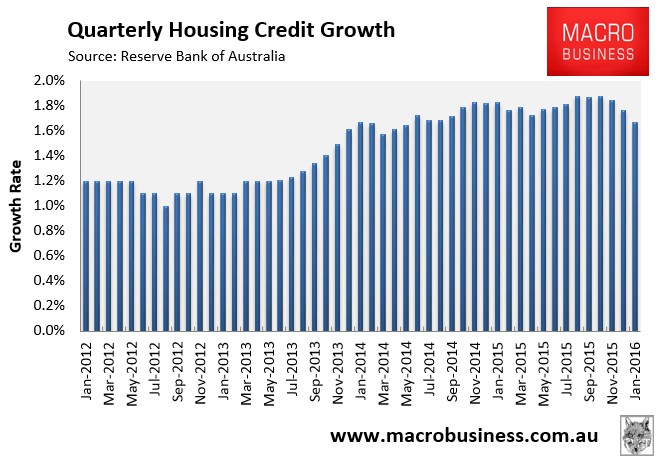
And annual growth also falling gradually, albeit with rotation between investors and owner-occupiers:
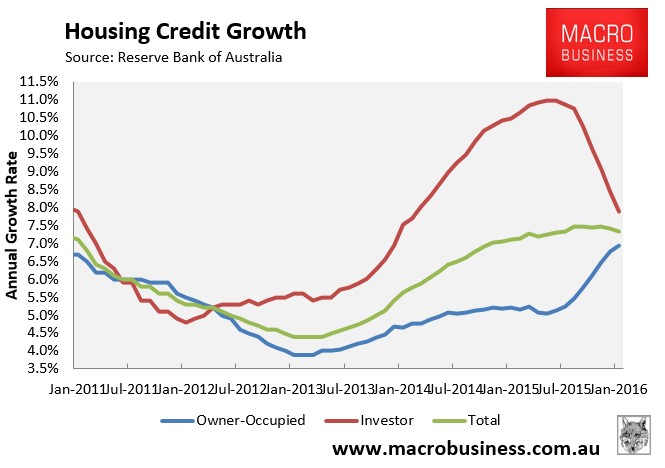
Other things equal, the falling growth in mortgage demand suggests that price momentum should weaken.
Commodities:
The news around commodities remains dire.
Early in the month, the RBA released its commodity price index for January, which registered another big fall, with the index falling by 2.9% in January, by 9.5% over the quarter, and by 25.8% over the year in SDR (currency weighted) terms:
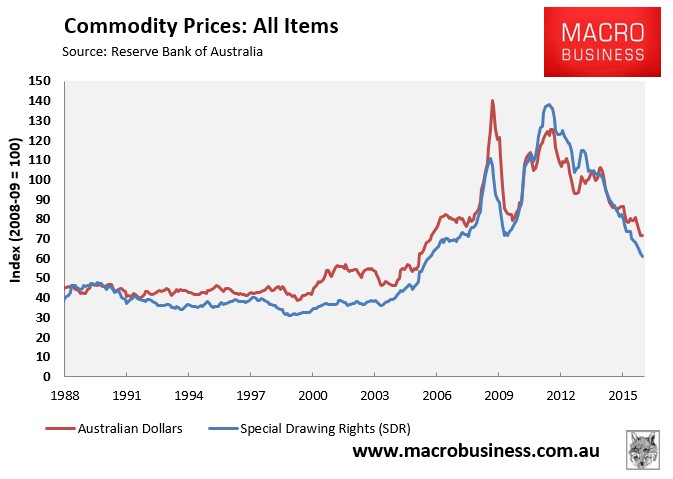
The commodity price index in SDR terms correlates well with the terms-of-trade (see next chart), suggesting that the national accounts for the December quarter, which are due for release tomorrow, will register more falls in the terms-of-trade, national income, and domestic demand.
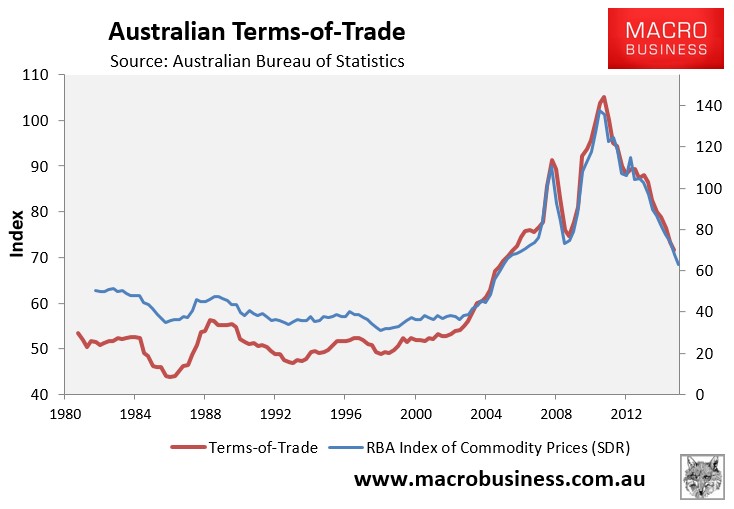
The trade data for the December quarter, released by the ABS, supports this view with Australia’s trade deficit deteriorating badly to $9,515 million, a $2,041 million downgrade from the September quarter, which represented the seventh consecutive quarterly deficit and one of the worst quarterly results on record:
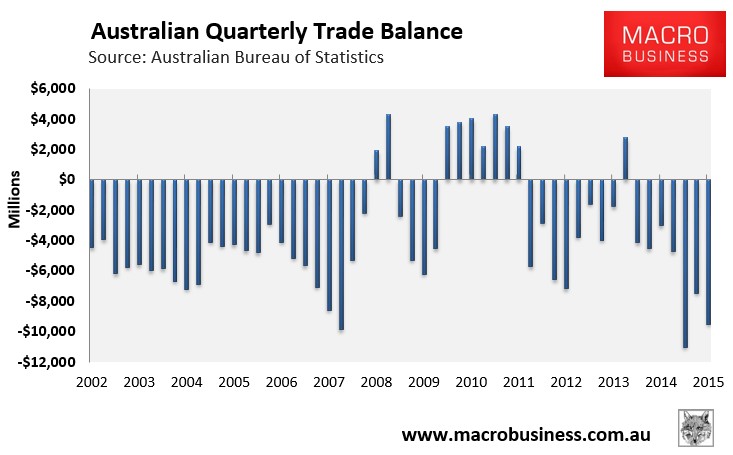
The fall in iron ore exports has been particularly swift, easily outweighing the boost from rising services exports:
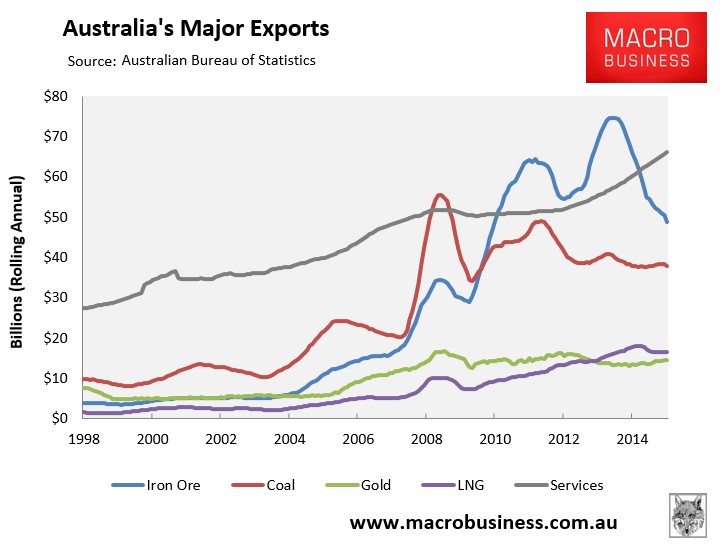
Construction and Capex:
The ABS released its value of construction work done for the December quarter, which registered a seasonally-adjusted 3.6% slump in total construction activity over the quarter and a 4.3% decline over the year.
The 3.6% quarterly fall in construction activity was driven by engineering construction (mostly mining-related), which slumped by 9.5% in real terms. By contrast, building construction rose by 2.7% over the quarter, comprising a 2.8% rise in residential construction and a 2.5% rise in non-residential construction:
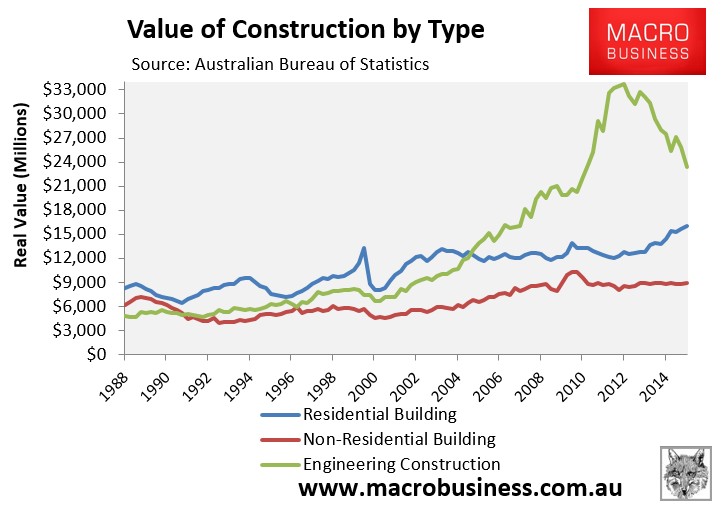
Somewhat contradictorily, the ABS’ capital expenditures (capex) survey registered a surprise 0.8% seasonally adjusted rise in actual capex over the December quarter, driven by a lift in “other” (services) capex.
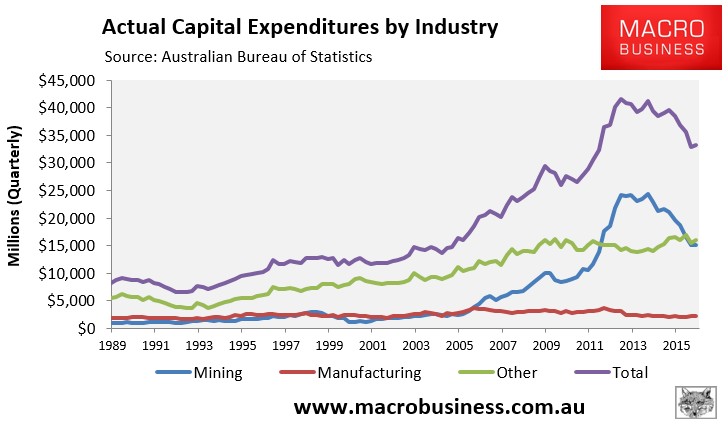
It is worth noting, however, that the value of construction work done is a more reliable indicator of actual activity and is what will feed into tomorrow’s GDP. In general terms, the capex survey is on a payments basis, which can throw up some odd results, whereas the construction survey is on a work done basis – that is actual activity in the period.
Regardless, the ABS’ accompanying survey of private business CAPEX plans for the 2015-16 financial year and the initial estimate of plans for 2016-17 was poor, with the expected upswing in services investment not forthcoming.
Estimate 5 for 2015-16 is $124 billion, 18% below the level of Est 5 for 2014-15. Estimate 1 for 2016-17 is $83 billion, 19.5% below Est 1 for 2015-16 (chart via Westpac):
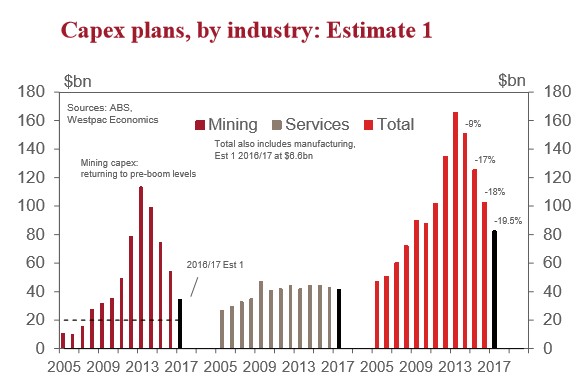
Labour force:
The labour force data released in February was mixed.
On the positive side, trend unemployment continued to fall to 5.8%:
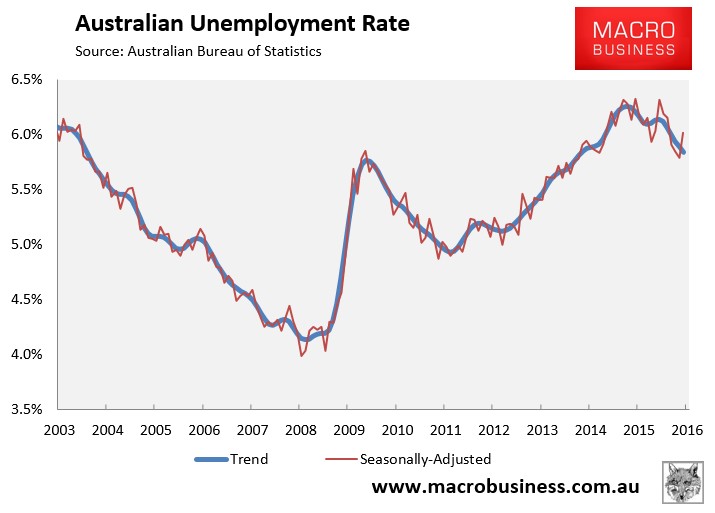
And annual employment growth remains robust (i.e. 2.1% full-time; 3.7% part-time; 2.6% total):
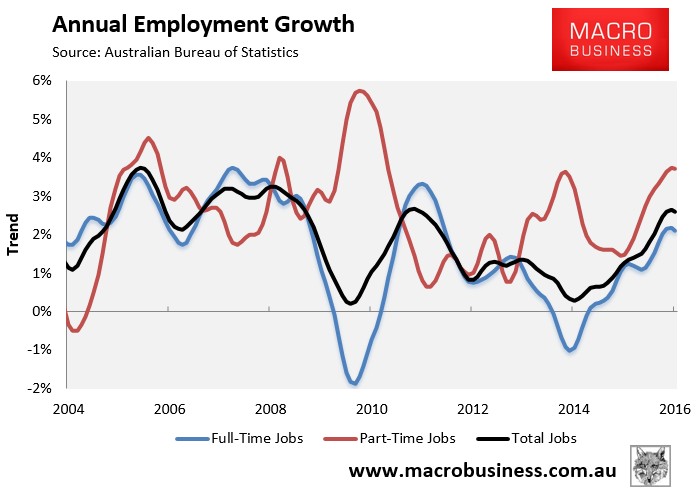
We expect the jobs data to continue to come in solid before turning downwards in the second half as the Sydney and Melbourne housing markets (both prices and construction) weaken, combined with the steeper falls in the mining investment and the closure of the car assembly industry from November 2016 (Ford) and continuing into 2017 (Toyota and Holden).
Offsetting this good news, the ABS also released its quarterly wages growth data, which hit the lowest level since records began in 1997 at just 2.2% in the year to December 2016:
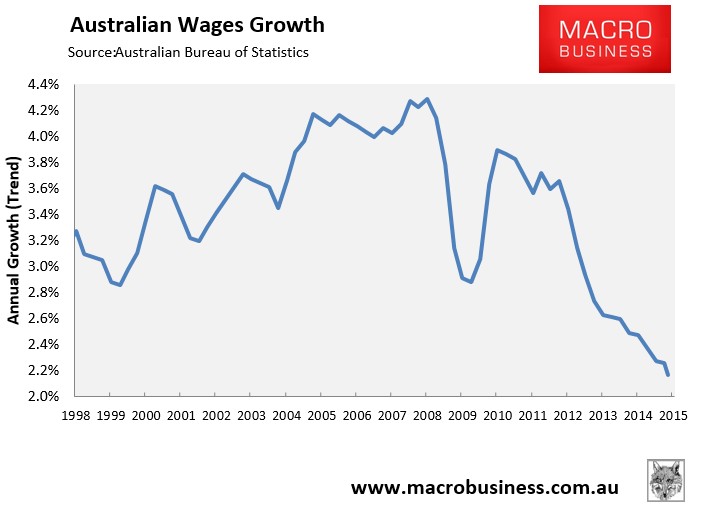
Adjusting for underlying (core) inflation, wages have grown by just 0.2% in eight quarters (i.e. since December 2013):
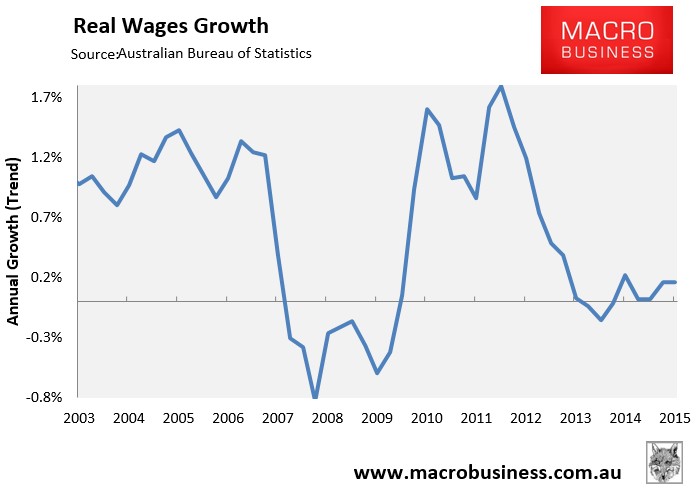
However, the true situation facing Australian workers is actually worse for two reasons.
First, wages have to rise faster than CPI just to remain steady due to the effects of taxation (bracket creep).
Second, the wages price index shown above measures like-for-like changes in wage costs for different industries, not changes in workers’ actual wages.
To get a better sense of how worker’s actual wages are growing, we need to look at the ABS’ Average Weekly Earnings (AWE) series, which was also released last week. As shown below, Australian average weekly earnings grew by just 1.5% in the year to November:
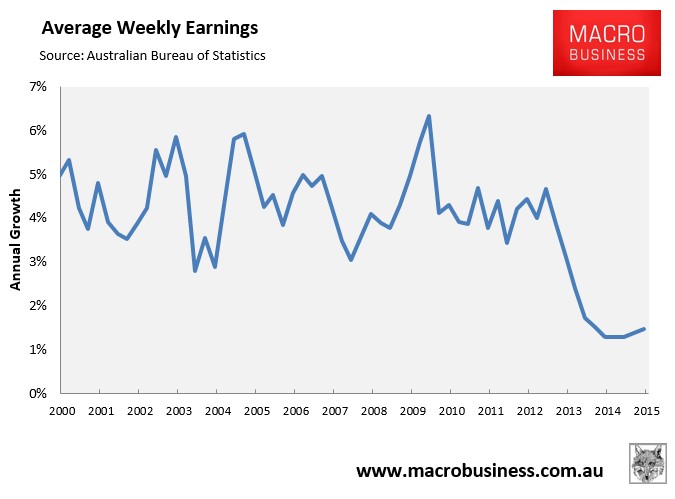
And when adjusted for underlying (core) inflation, they fell by 0.6% over the year. In fact, since May 2013, real average weekly earnings have fallen by 2.1% (see next chart).
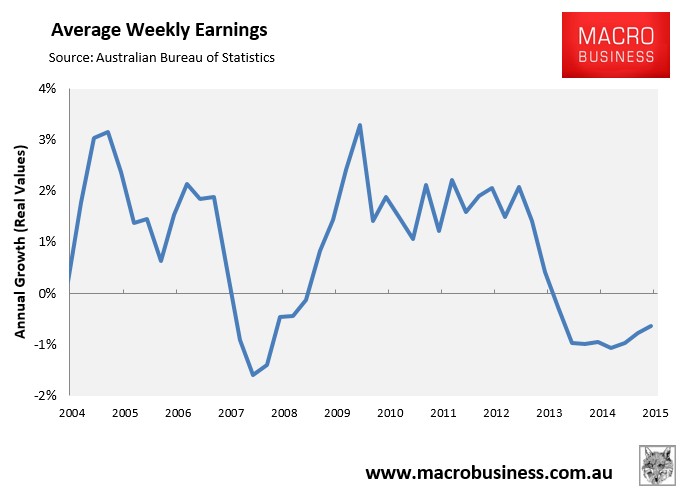
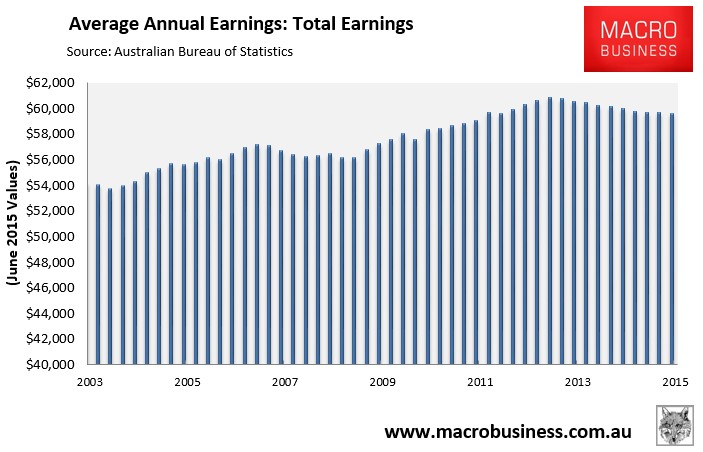
The reason for the real decline in AWEs is because of the rotation out of highly paid jobs, such as those that are mining-related, into lower paid jobs in services. HSBC estimates that average wages in the services sector are about 40% lower than in mining. Thus, the rise in AWE has been dampened not just by slow wages growth in each industry, but because of the shift of workers into lower paying jobs.
Unfortunately, this jobs rotation is likely to continue. Mining investment still has miles to fall as LNG projects are completed (see capex charts above), and mines will very likely continue to slash employment to keep ahead of falling commodity prices.
This means that over the next few years, there will be many thousands of redundant (formerly highly paid) workers in mining-related industries looking for lower paid jobs in the services sector.
Conclusion
The economy slowed in February. Credit has fallen back from Q4’s breakneck pace after macroprudential measures. House price growth is falling back as well. The peak in residential construction is in sight with a steepening fall in its wake. The terms of trade continue to fall sharply pulling down income and wages. The mining capex cliff shows no sign of ending in the next two years and the hoped for offset in services is not materialising. The labour market has begun to give back the ABS’s dubious gains.
We see no reason to change any forecasts at this point:
- more rate cuts;
- a falling dollar;
- struggling profits in mining, increasingly in banks, and a productivity push across industrials, and
- a housing market in which prices will stall and fall during the year.

